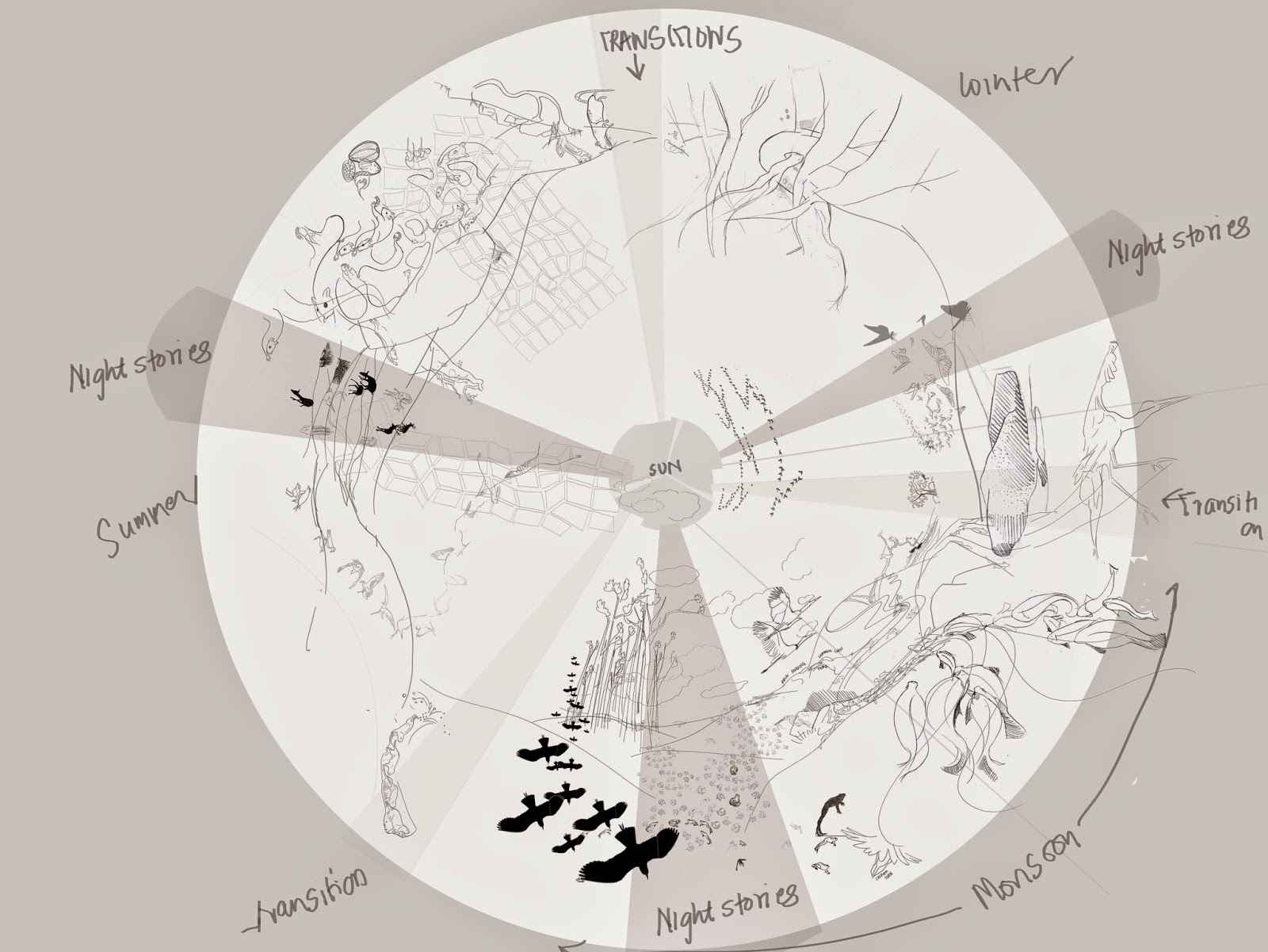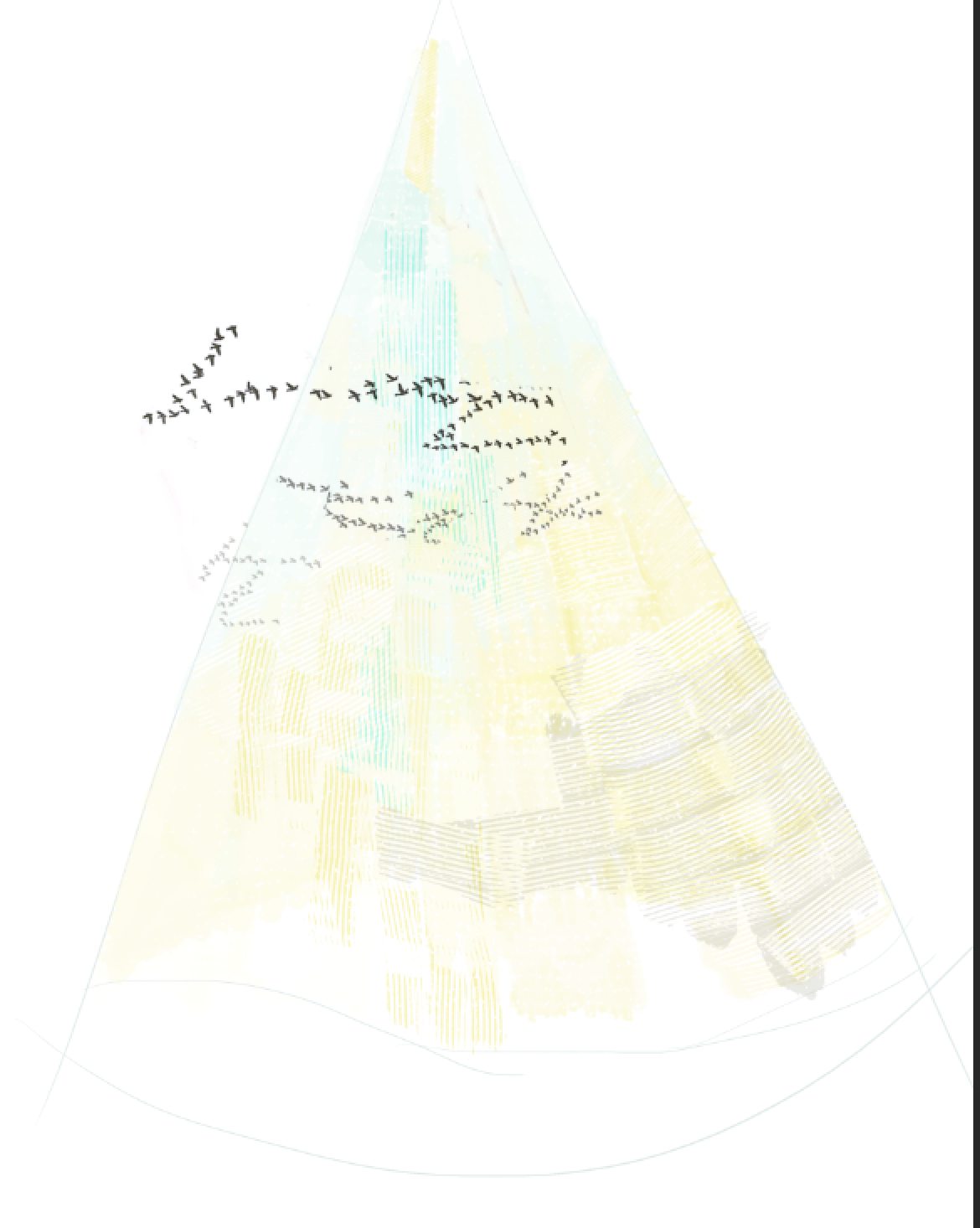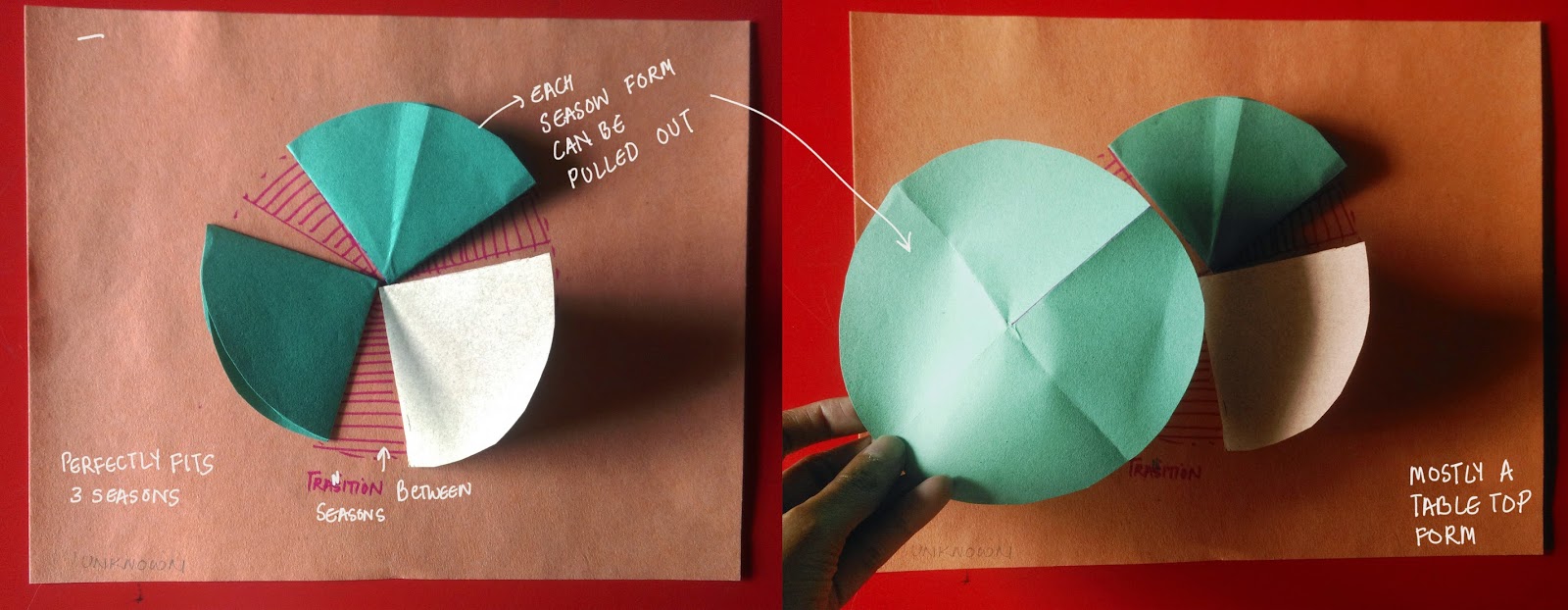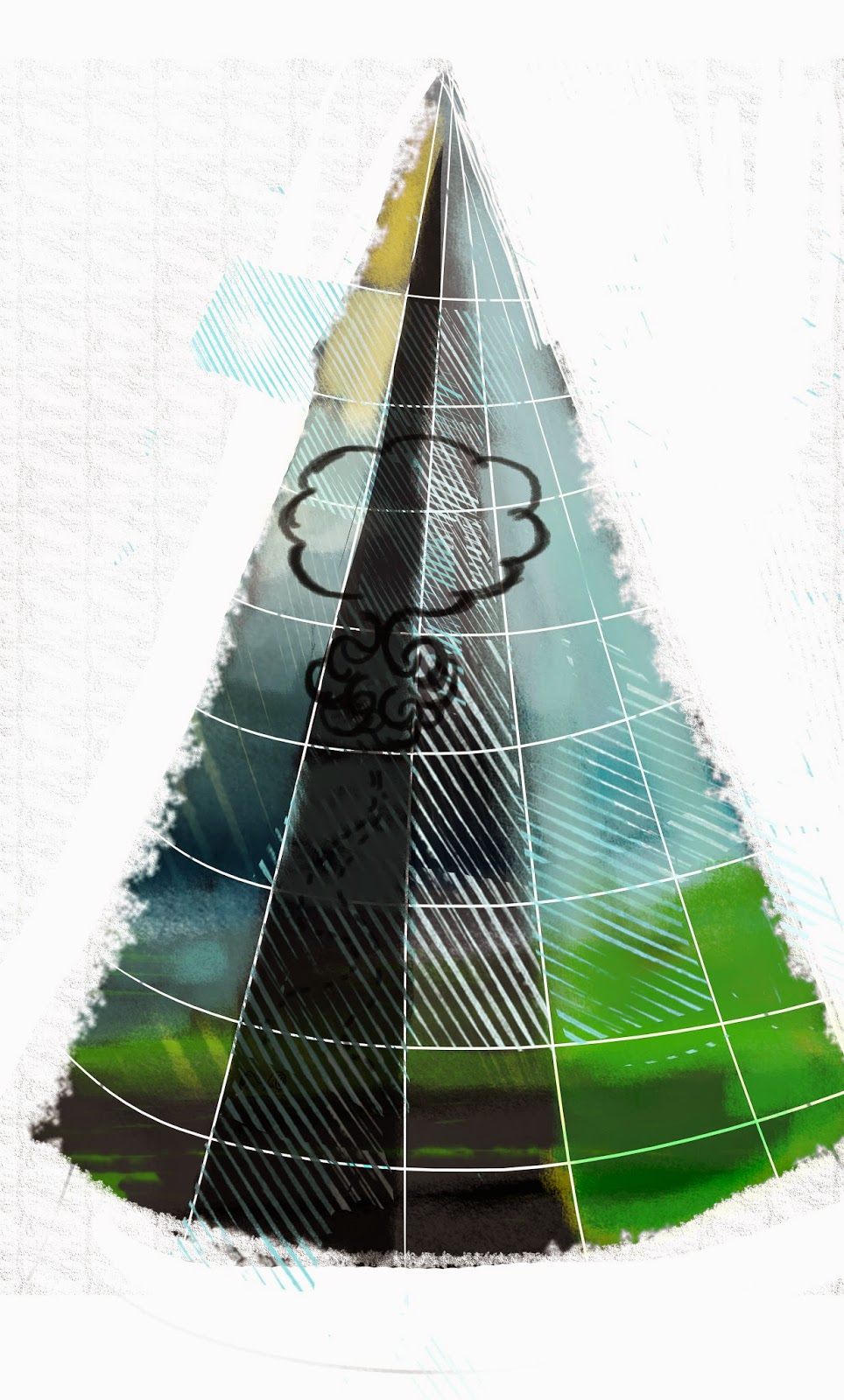·
Flatten a few patches to remove a
few texture patches. Too much texture is distracting.
·
How does one identify the season
change/ transition spaces?
·
Balance between illustration and
information design through clarity in the activities happening in the map.
Text
·
Having text in the map to support
the visuals can be looked at. A separate form can become unnecessary. The text
will also help the viewers to understand/communicate information and make it
look more like a map.
Form:
·
A simple mechanism like rotation will
be interesting to play around in the form.
Presentation skills
·
To spend more time talking about
the stage the project is at, then the process while presenting.
·
Could have started by sharing the
final work first and also a quick introduction where your own personal interest
lies in this project.















































